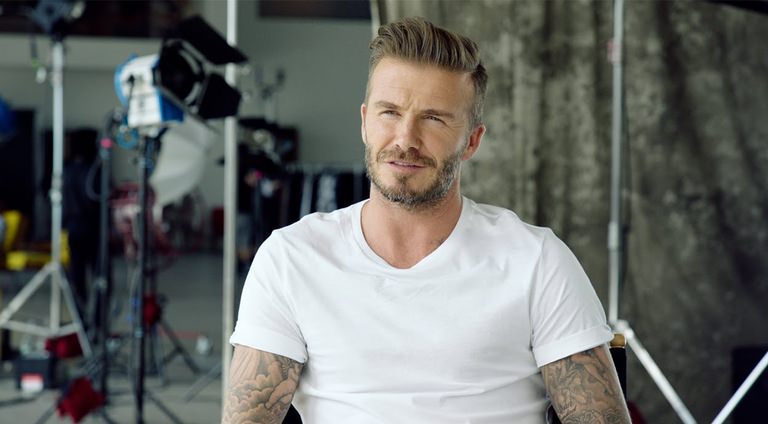Debunking the
Most Popular Hair Myths
Don’t let these common beliefs keep you from having great hair

You probably know that you don’t need to shampoo everyday. Or that plucking a grey hair won't actually lead to two more growing in its place. But there is still a good amount of misinformation out there, floating around when it comes to mane maintenance that many of us still believe. If you're interested in having the best possible hair—and you are right?—then make sure you get the real story on these six popular myths. We've consulted the experts and the science to make sure you get your follicular facts straight.
Myth
Dandruff Is Just a Dry Scalp
Reality
That aggravating itch and those embarrassing flakes aren't something that can be fixed by drinking more water or using extra conditioner. “People often think that they have 'a dry scalp,' when in fact it's dandruff,” says Dr. Angela Lamb, a dermatologist at Mount Sinai Hospital. “At the first sign of dandruff, do not be in denial.” The flaking skin is actually your skin's overreaction to yeast or fungus that occurs naturally on the scalp. Things like stress and changes in the weather can flare the condition, too, she says. To get the balance under control and stop the skin from drying and flaking off, you can use an over-the-counter antidandruff shampoo packed with selenium sulfide a few times each week.

Moisturizing dandruff shampoo with aloe, $8.29 by Selsun Blue
Myth
You Inherit Baldness From Your Mother’s Side

Reality
While it's estimated that about 80 percent of balding is hereditary, you can't simply look at your mother's family to determine your chances of losing your hair. “Researchers have long been aware of a genetic variant on the X chromosome that was linked to male pattern baldness,” says Dr. Brent Richards of McGill University's Faculty of Medicine. “That's where the idea that baldness is inherited from the mother's side of the family comes from,” he explained. But according to a study conducted at McGill University, several genes—not necessarily all from your maternal side—contribute to how much hair you have (and keep). According to the findings, a third of all men will be affected by some form of male pattern baldness by age 45, thanks to a testosterone-and-enzyme combo called DHT. The key, he says, is to notice hair loss early and treat it in order to stave off permanent loss. Consult your dermatologist or utilize such online services as Hims and Keeps to inquire about prescription and over-the-counter solutions to hair loss.
Advertisement
Myth
A Cheap Haircut Is Just As Good As an Expensive One
Reality
Look, you've got to save money where you can. And maybe you've got a simple request for your haircut and don't feel like you need to spend a lot. We're not going to tell you how much to spend on a cut. We'll simply say that like a pair of shoes or a tattoo, you get what you pay for. And an inexpensive haircut can seem like a deal until it doesn't quite grow out the way you were hoping for or it was rushed and you're not exactly thrilled with the result. Certain barbers cost more because they've invested in everything from education to equipment. Consider what you plan to ask for, or if you'd like some help making your problematic hair more manageable, and then think about shelling out for a quality trim.
Myth
Cutting Your Hair
Makes It Grow Faster
Reality
Your hair doesn't know when it's been cut. And a trim won't affect the growth process. Growth happens within the scalp, and there are vitamins and supplements you can take to encourage growth. Because it takes a lot of energy for your body to grow new hair, it needs fuel. But there is a reason experts suggest trimming your hair every six to eight weeks: Frayed and split ends will make hair look thinner and cause breakage, so when you cut them off, your hair appears fuller and thicker.
Advertisement
Myth
Wearing a Hat Makes You Go Bald
Reality
You've likely heard this one time and time again. And maybe you've taken off your cap and noticed a few stray hairs inside. Plus, just about everyone's hair looks a little flat, thin and messy after wearing a hat for several hours. But it can't make you go bald, plain and simple. Hair loss is cause by a combination of hormones and genetics. That said, wearing a hat constantly can damage your hair by applying pressure and friction which can lead to breakage. Or a dirty cap can trap grime and sweat leading to scalp irritation, so make sure yours is clean or rotate hats frequently.
Myth
You Should Rinse Out All of the Conditioner
Reality
You're probably used to working in the conditioner after shampooing and then standing under the spray wondering if you've gotten it all out. But rinsing away all the conditioner until your hair is squeaky clean actually defeats the purpose of conditioner. It also rinses away the bulk of the nutrients you've paid for (and just applied). Think of conditioner like a moisturizer for your hair. You want to leave some on to treat and hydrate the strands. If you're worried about your hair feeling greasy after a shampoo, don't rub the conditioner into your scalp, just focus the product on the ends of your hair. And look for a conditioner that's lighter in weight and packed with good ingredients.

Botanical protein complex conditioner, $24 by Port Products
Style Your Hair Like a Stylist
“
Don’t apply product right out of the shower, it dilutes the product. Towel dry your hair until it’s about 85% dry.”
- Jeff Laub, of Blind Barber






